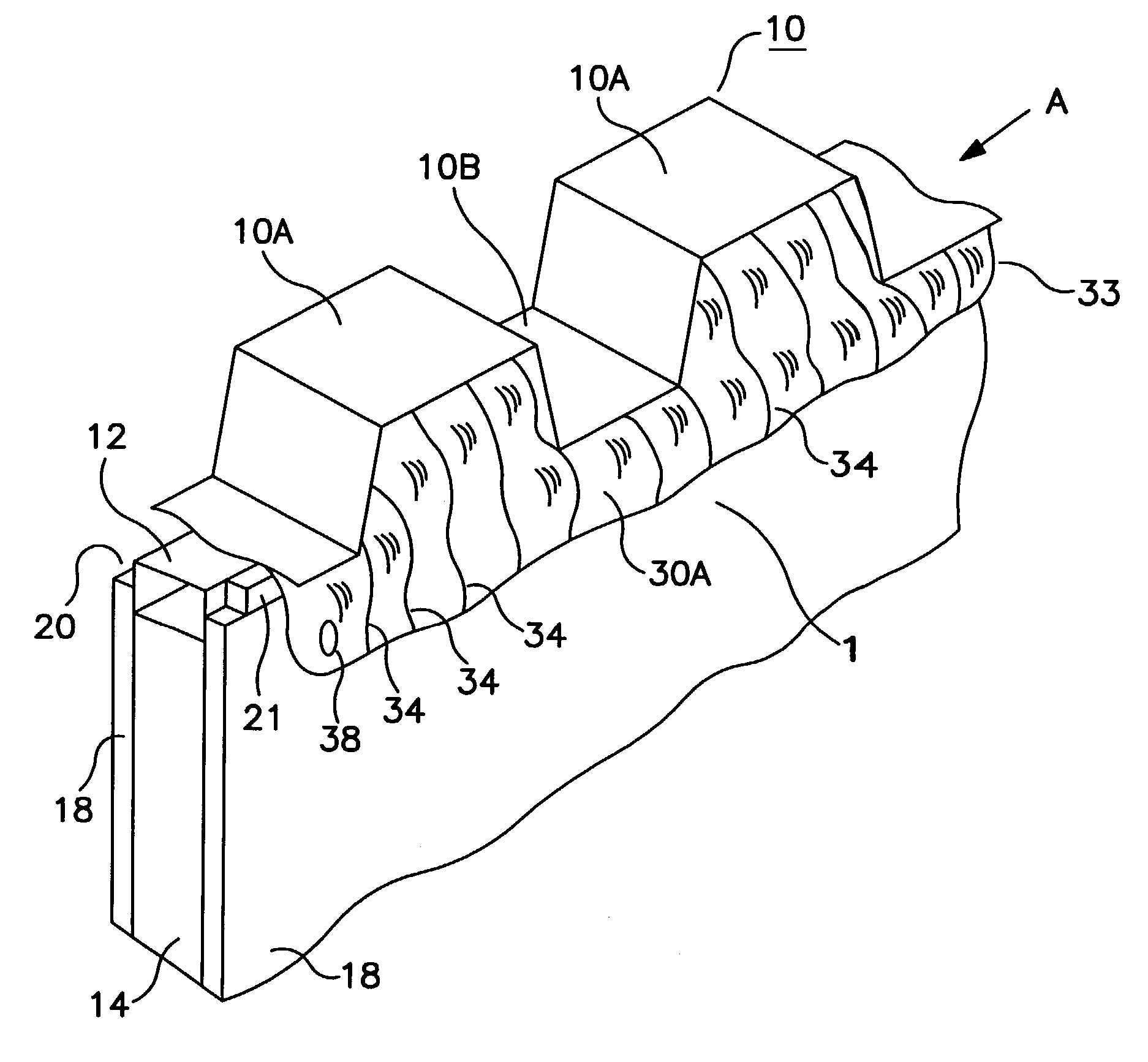In situ molded thermal barriers
a thermal barrier and in situ technology, applied in fire prevention, building repairs, mechanical equipment, etc., can solve the problems of time-consuming and expensive installation of firestopping, gypsum wallboard expansion and contraction, and inability to mold, etc., to achieve excellent fire resistance and sealing ability, smoke and acoustic barrier properties, and high amenability to visual inspection
- Summary
- Abstract
- Description
- Claims
- Application Information
AI Technical Summary
Benefits of technology
Problems solved by technology
Method used
Image
Examples
Embodiment Construction
[0028]The present invention employs one or more thermal barrier molding bags that may be conveniently placed in openings in structure, such as a wall, ceiling, or floor, or conveniently placed in gaps such as are defined in the joints between walls, ceilings, and / or floors. The molding bags are placed empty in the hole or gap, and a flowable firestop material is introduced into the molding bag, thereby expanding the bag to fill the space within the hole or gap, and the flowable firestop material is then allowed to harden within the hold or gap to provide a strong thermal barrier.
[0029]As shown in FIG. 1, a “head-of-wall” joint gap appears between the top of a vertical wall and ceiling (PRIOR ART). In this case, the wall is made by attaching a horizontal metal track 12 or runner to a fluted metal ceiling 10 which runs in a perpendicular manner to the wall (12). The ceiling 10 has fluted portions 10B which are somewhat lower than the top ceiling portion 10A, and thus a joint cavity 16...
PUM
| Property | Measurement | Unit |
|---|---|---|
| Length | aaaaa | aaaaa |
| Length | aaaaa | aaaaa |
| Length | aaaaa | aaaaa |
Abstract
Description
Claims
Application Information
 Login to View More
Login to View More - R&D
- Intellectual Property
- Life Sciences
- Materials
- Tech Scout
- Unparalleled Data Quality
- Higher Quality Content
- 60% Fewer Hallucinations
Browse by: Latest US Patents, China's latest patents, Technical Efficacy Thesaurus, Application Domain, Technology Topic, Popular Technical Reports.
© 2025 PatSnap. All rights reserved.Legal|Privacy policy|Modern Slavery Act Transparency Statement|Sitemap|About US| Contact US: help@patsnap.com



